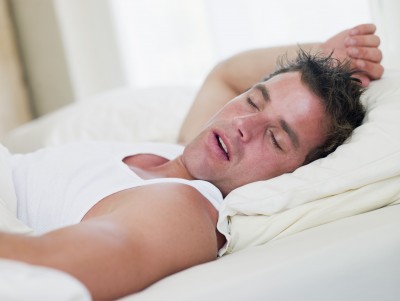Mouth breathing drastically reduces body oxygenation: the amount of freely available oxygen in tissues is usually reduced almost two times when the person starts to breathe through the mouth, for example, during sleep. Epidemiological studies clearly proved that deaths from heart attacks, asthma, COPD, epilepsy, complications of diabetes, and many other chronic conditions most likely occur during early morning hours (from about 4 to 7 am). Clinical experience suggests that mouth breathing is the leading factor of these deaths. Apart from mortality statistic, symptoms of many conditions get much worse in the early morning. How to prevent negative effects of acute tissue hypoxia, that is the driving force for cancer, heart disease, diabetes, asthma, and dozens of other diseases?
In order to ensure nasal breathing during the night, in the 1960s Russian patients, practicing the Buteyko self-oxygenation breathing method, taught by MDs, invented mouth taping. First of all, it is necessary to find out, if one has this problem, by checking dryness in the mouth just after waking up in the morning. If the mouth is dry, the person had mouth breathing. It could begin when the person went to sleep or it could appear at 3 or 4 am. In any case, just 20-30 minutes of mouth-breathing resets the breathing centre, and such patients, as a ruler, have less than 20 s of oxygen in the body in the morning. (Oxygen content is found by measuring stress-free breath-holding time after usual exhalation: exhale normally and hold your breath, counting seconds using a watch, but only until initial signs of discomfort.)
For mouth taping one needs a surgical tape and cream to prevent the tape sticking. Both can be bought in the pharmacy. Micropore (or 3M) and Vaseline are popular choices. There is no need to use a very wide tape, 1 or 1.5 cm is sufficient. First, put a small amount of cream on the lips so that it is easy to remove the tape in the morning (some, but not many tapes, can be very sticky). Then take a small piece of tape, about 4-5 cm (or almost 2 inches) long, and stick it vertically, starting just under the nose and going across the closed mouth down to the chin. Some students prefer to put a wider it along or horizontally, but a short piece in the middle is sufficient. If you are afraid to "seal" your mouth completely, tape only one half (or one side) of the mouth leaving space for emergency breathing.
Taping one's mouth at night normally should be a temporary measure. When the body oxygenation is above 20-25 s in the morning, mouth taping is not necessary.
After some hours of sleep, very few people may find mouth taping is uncomfortable. But this happens only in cases, when parameters of sleep are not suitable for the human organism, for example, the blanket can be too warm, room temperature too high, air quality poor, etc. Sleeping on one's back is another factor that also intensifies breathing and drastically reduces body oxygenation creating discomfort, if the mouth is taped. My other articles explain the method "How to prevent sleeping on one's back", data regarding highest mortality rates and various complications during early morning hours.
Resources
Mouth Taping Technique in more details with links from NormalBreathing.com
What Causes Constipation: Low O2 and CO2 levels in cells due to heavy breathing with a link to a simple breathing exercises solves constipation problems in less than 2 minutes
Nose Breathing Prevents Exercise-Induced Asthma - Knol from Google.com
NormalBreathing.com has hundreds of medical quotes and references, graphs and charts, tables, analysis of numerous respiratory techniques, results of clinical trials, free breathing exercises, lifestyle modules, manuals, techniques, and other resources to increase cell and body oxygen levels and improve health.







